How To Create An Augmented Reality App
Augmented Reality (AR) keeps flourishing in the digital world, and there is every reason to believe that the trend for augmented reality app development will prevail.
Though popularized in entertainment technology especially after launching Pokemon Go, augmented reality has grown into multiple industries such as healthcare, e-commerce, architecture, real estate, and many more. Companies make use of augmented reality to implement product demonstrations, interactive advertising while providing real-time information to customers remotely.

Based on The Global Augmented Reality Market statistics forecast, the augmented reality market was valued at $2.45 billion in 2016 and is currently projected to reach at least $136.55 billion by 2025, growing at a CAGR of 56.32% from 2017 to 2025.
People are continually drawn to augmented reality: according to ISACA studies, 70% believe that by incorporating it into their daily lives, they will enhance the ability to get new skills, while 67% believe that AR is beneficial for healthcare services, and 64% see the potential for hassle-free shopping with AR. So, it's no surprise that so many entrepreneurs are wondering how to make augmented reality app nowadays.
What is an augmented reality app?
An augmented reality application is software that works by integrating visual and audio components to a person's real field of sight, supplementing it with the necessary information and features.
How Can Augmented Reality Create Value for Your Business?
Augmented reality traces back to the late 1960s and is called The Ultimate Display by Ivan Sutherland. As time went by, augmented reality has been connected to the entertainment industry offering new experiences for game enthusiasts.
AR apps are applied on a wide scale in games, photos on different social media platforms especially, Snapchat as well as other industries incorporating advanced technology in their services such as healthcare or medical sciences, retail, tourism, and education.
As technology evolves, augmented reality gets a 'boost' too with newly discovered information.
Healthcare/Medical Sciences
Augmented reality provides a powerful and helpful tool in healthcare software development as it gives a wide variety of opportunities for training and performing procedures by healthcare professionals. An example would be Microsoft's HoloLens wherein doctors learn about human anatomy differently via advanced technology. Surgical procedures, tumor identification, blood flow visualization, and even reconstructive surgery procedure planning are easier with the use of augmented reality.
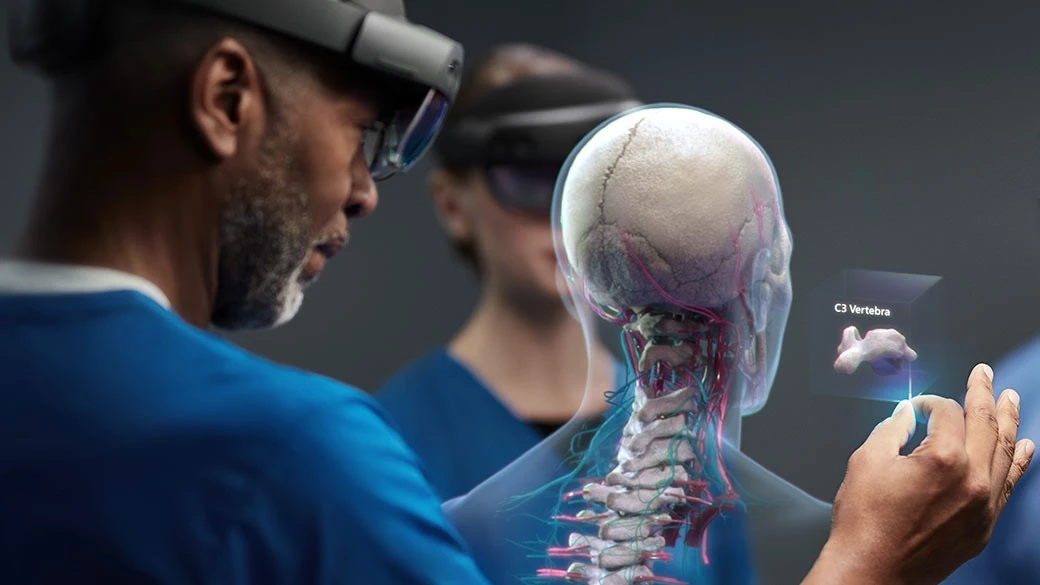
Image source: Microsoft HoloLens
Retail/E-commerce
Although сustom eCommerce solutions have changed the ways of shopping, it is still different when you can touch, see, and feel the products you want to buy. From furniture to clothes and make-up, augmented reality offers a different take on shopping. AR works by using a camera or a photo uploaded over the application. Users can easily pick a piece of clothing or make-up and see virtually how it looks on their faces or body. This helps consumers shop for items easily without having to go to a physical store.
Read more about
Tourism
Augmented reality deems not only helpful but also informative. Gone are the days when one should carry paper maps for traveling to find out which direction to go. From a mobile device, sound, video, graphics, and GPS data can easily point you in the right direction when you want to go from one place to another. On the other hand, historical trivia about different places in the world can easily be known when traveling without having to check a book or browse the internet for data. Wikitude app offers different insights and information about certain places around you with just the use of your camera phone and internet which makes it easier for travelers from all over the world.
Related:
Sports and Entertainment
One of the most popular industries to incorporate augmented reality into, from Snapchat's Lens features wherein users can take photos of them with different face transformations to Niantic's famous Pokemon Go. Choosing a seat in cinemas, concert tickets, and even in the Super Bowl. StubHub developed a feature wherein users can see a virtual 3D model of the U.S. Bank Stadium so ticket buyers can choose the best seats they prefer. Another example is when AR is used in different sports such as football, baseball, or cricket—identifying the trajectory of a ball being hit highlighting if it was successful or not.
Education
Augmented reality plays an important part in both the present and future of eLearning software development. With the use of AR, real-looking objects can easily be projected in a learning environment, allowing a student to see the real-like image instead of showing pictures in picture books. Teachers can also use different types of applications for such subjects as Chemistry, Physics, Biology, and Math so that students are continually stimulated by engaging in the fun learning experience and experiments.
How Do Augmented Reality Apps Work?
Capabilities of Augmented Reality
Augmented reality is capable of extracting visual data and information in two different ways: marker tracking and image recognition through a smartphone and its camera.
Marker tracking uses square markers encoded with ID while image recognition uses 2D images like product packaging, photos, and paintings. With this data, the software distinguishes where it is physically located through the marker or image. Moreover, other tracking methods have continuously been developed including 3D object tracking for toys, furniture, sculptures, and other things recognized by the software.
Main Types of Augmented Reality Apps
Smartphones often come to mind when you hear the term 'Augmented Reality'. However, we, as an augmented reality app development services providers, understand that with the evolution of technology and AR, there are other ways to use augmented reality in our daily lives.
- Projection-based AR
Projection-based AR projects light, digital images, objects, and the environment into a surface in two methods. One is interactive wherein a specific object is projected into a surface and by touching the projection, the particular object will function. On the other hand, a non-interactive method is widely used to create deception about a certain position, orientation, and depth of an object. Both of these methods are highly efficient in different industries, especially in education and healthcare.
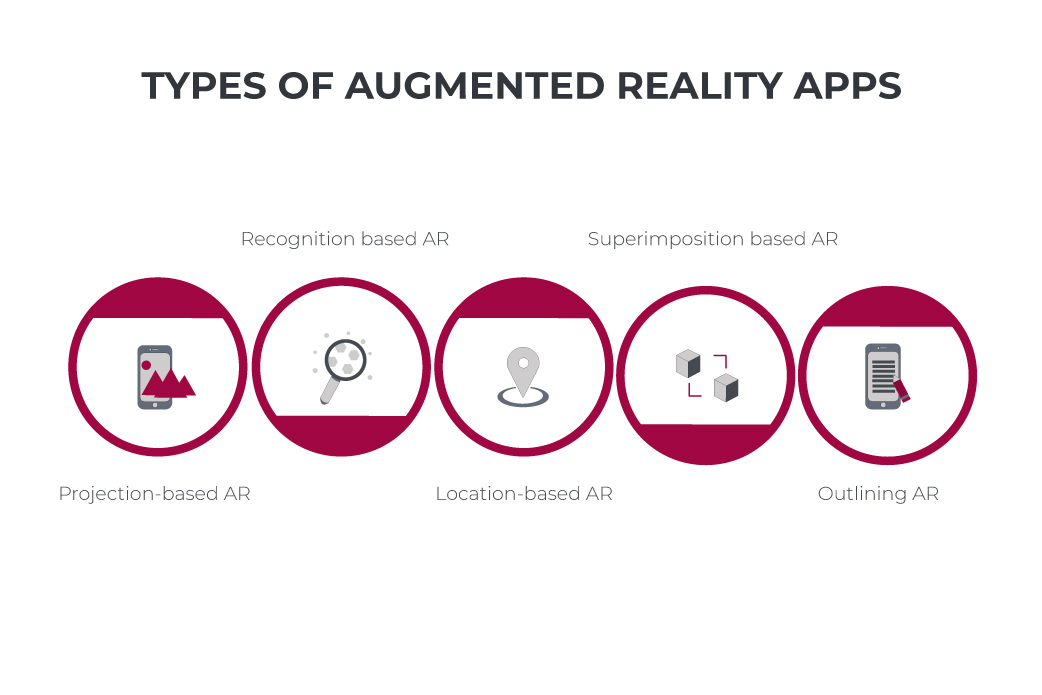
- Recognition based AR
This type uses image recognition for pattern detections or image markers. Once the application can recognize an image or an object, its information will be readily available. Recognition-based AR apps use different methods to recognize objects and identify information. One is the simulation of objects in 3D wherein non-3D pictures are used as markers to create a 3D version of itself. Another one is the translation of different foreign words detected wherein the Optical Character Recognition technology is used via the camera and translates into a prevalent or user's preferred language.
- Location-based AR
GPS, accelerometers, and digital compasses are used in location-based AR apps to establish the location and create augmented reality objects. Aside from being able to use these apps like maps, it can also provide and formulate interesting locations to visit based on the current location you are in or previously searched. It can also provide additional information and trivia about a specific location which again, can be helpful for tourists and travelers across the world.
- Outlining AR
Using cameras and sensors, outlining AR apps are used mostly in vehicles and the streets. Outlining AR is used especially in cars that help you whenever you're parking it. Cameras and sensors allow you to see and notice the boundaries in an environment that cannot be seen in the rear-view mirror. It is also used by architects and engineers to study locations where pillars and metal bars are to be built for construction without having to use a lot of time on paper drawings.
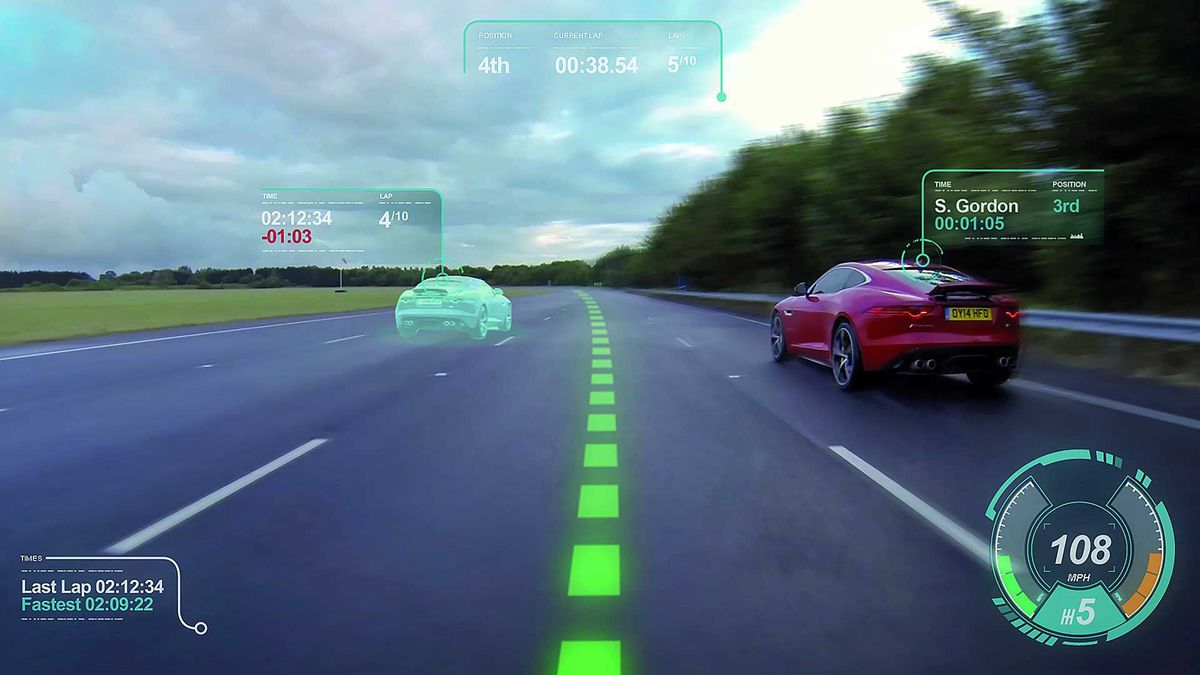
- Superimposition based AR
Popular in the healthcare and medicine sciences industry is the Superimposition-based AR app. Doctors typically use this technology to superimpose a view of a patient's body parts like bones, tissues, muscles, and organs to better understand the damage and provide timely treatment. Another example of Superimposition's implementation is in military applications where visions of important objects and targets are easily seen.
How to develop an Augmented Reality App?
In general, the process of creating an augmented reality application includes the following steps:
1. Decide on the specifics of your product
2. Study the market
3. Choose the correct SDK (more on this below)
4. Decide on your audience
5. Development stage
6. Publishing the application
How to Choose Augmented Reality SDK?
What is Augmented Reality SDK?
A software development kit (SDK) is a pack of tools you need to make an augmented reality app development process faster and prevent errors in the software you're creating. With SDK on hand, special features can be added to your product. However, it's not easy to choose an augmented reality software development kit, especially when you face the fact of the availability of numerous tools in the market nowadays.
How to choose the right SDK?
There are many factors you need to consider including project goals, management style, and most importantly the tech stack of the app you are creating. It is also important to note the following:
- Native AR tools support
- Operating platform
- Programming language
- Future AR app updates
- Monetization concept and licenses
Equipped with this knowledge, you will be able to know just how much money you need to build AR app.
Augmented Reality Tools for Mobile Apps
Wondering how to create an augmented reality app? Below, there are some of the most popular toolkits in the market at present:
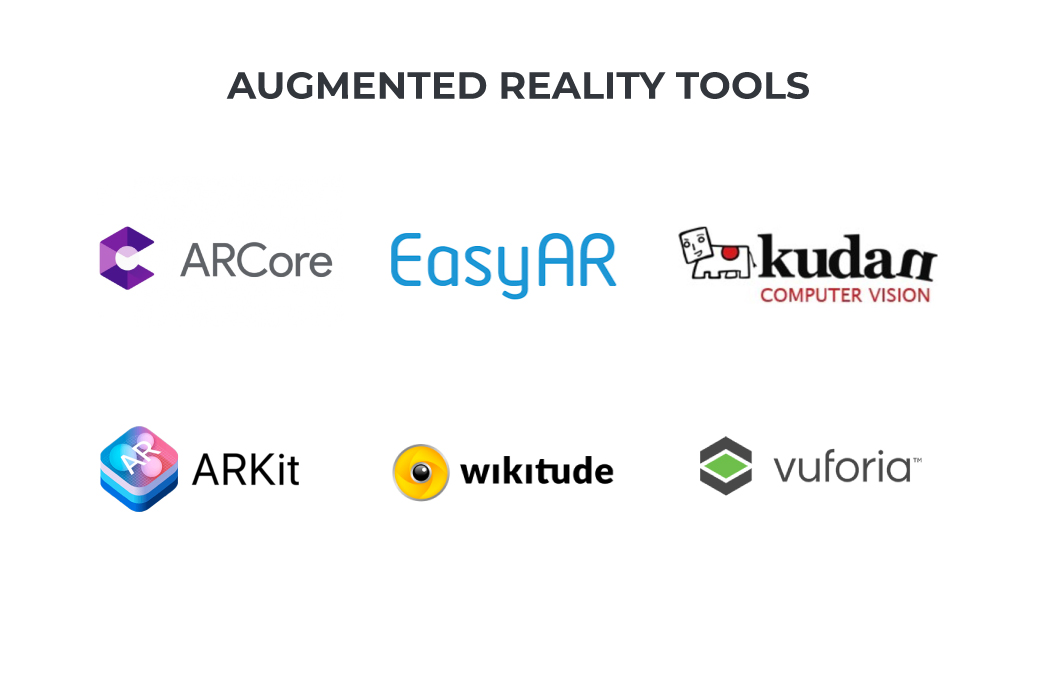
- Vuforia – an augmented reality SDK providing mobile-centric and immersive augmented reality experiences for app developers and businesses. The Vuforia SDK is capable of identifying and tracking image targets and 3D objects in real-time. Businesses then can orient and place virtual objects, 3D models, and a variety of contents in relation to the real-world environment. Aside from that, Vuforia AR SDK can recognize multiple objects, support text recognition, and even provide a wide range of vocabulary, allows the creation of customized VuMarks, turn static images into full-motion videos, provide Unity Plugin and support both cloud and local storage on devices used.
- Google ARCore – Known for having three significant features that aid in enabling developers to merge the real world with the virtual world through estimation of real-world lighting conditions, detection of size, location, and angles, and motion tracking. All these features help provide a very realistic and creative augmented reality for an added user experience, making Google ARCore one of the best augmented reality development tools.
- Apple ARKit – Provides a unique framework for app developers and businesses to create AR app. It enables 3D objects and digital information while being blended with the real world. Apple ARKit has Visual Inertial Odometry which allows accurate tracking of the real world's environment. Aside from that, it has a strong face tracking function to easily apply effects and imitates facial expressions, light tracking, angle tracking, 2D object detection, and integration with third-party tools like Unity and Unreal Engine.
- Maxst – Comprises of a variety of features, Maxst offers visual Simultaneous Localization and Mapping (SLAM) perfect for mapping and tracking. Aside from that, Maxst is capable of QR and barcode scanning, image tracking, and Unity plugin integration.
- Wikitude – Designed specifically for enabling augmented reality app developers to create location-centric augmented reality for users. It then further developed into having geolocation app features, tracking, and image recognition with its SLAM technology also known as Simultaneous Localization and Mapping. As of today, Wikitude is one of the best augmented reality mobile app development SDKs.
- Kudan – This SDK engine is initially developed to cater to both marker-based and markerless location and tracking requirements. It has architecture-specific optimization to provide quick and strong operational performance with seamless operation from specialist VPU to being embedded in a chipset. With Kudan, you can make your AR app development process smooth and fast.
READY TO DEVELOP YOUR AUGMENTED REALITY APP?
Augmented Reality SDK Comparison Table
Now, it's time to compare the most famous SDKs in terms of augmented reality app development cost, supported platforms, cloud recognition, etc.
| AR SDK | Type | Supported platforms | Smart glasses support | Unity3D | SLAM | Cloud recognition | Price |
|---|---|---|---|---|---|---|---|
| Vuforia | SDK | A, iOS, W | yes | yes | – | yes | Free, Commercial |
| Google ARCore | Framework | A (iOS) | yes | yes | yes | – | Free |
| Apple ARKit | Framework | iOS | yes | yes | yes | – | Free |
| MaxST | SDK | A, iOS, W | yes | yes | yes | yes | Free, Commercial |
| Wikitude | SDK | A, iOS, W | yes | yes | yes | yes | Commercial |
| Kudan | SDK | A, iOS | – | yes | yes | – | Free, Commercial |
The Best Augmented Reality Apps for Android and iOS
Augmented reality incorporated into our daily lives might sound like a sci-fi movie but as technology evolved, it has become a necessity for an easier and improved quality of life. Here are the best-augmented reality applications that impacted the lives of developers, brands, and users remarkably:
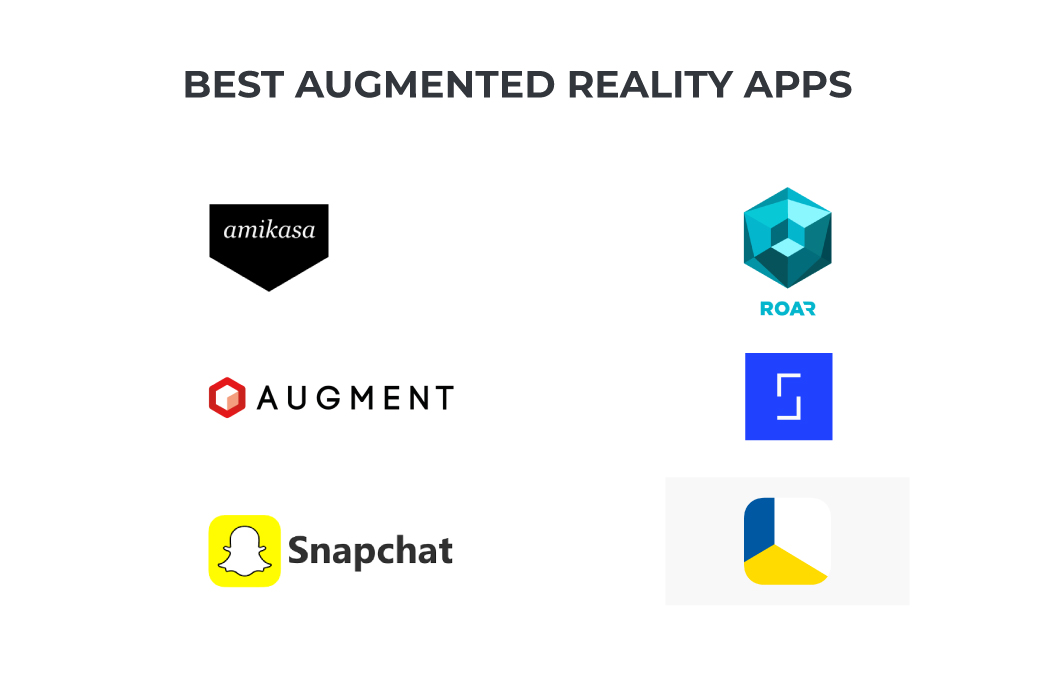
Augment – the platform for 3D and augmented reality product visualization which is especially helpful in sales and marketing
Amikasa – an app only available on iOS that helps you design a room and figure the layout of every piece of furniture you wish to buy by giving you a 3D vision of it. It has features to help you visualize the color story and perfect furniture style.
SketchAR – this app projects an image of your choice on paper which you can use to trace and draw without having to struggle with grids and sketches.
IKEA Place – another furniture and home décor app with special features that consider the size of your home and entire floor plan to suggest perfect furniture for your place and taste.
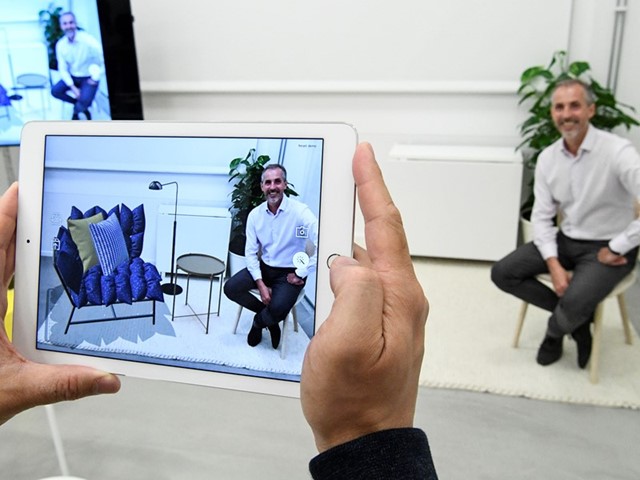
Image source: IKEA
Roar – for a more convenient shopping experience, the Roar app provides important shopping information such as prices, ingredients, reviews from other users, and even promotions and discounts available by just taking a photo of the object you're interested in.
Take a look at this extensive guide on
S napchat – a social media app featuring different geotagging options and face filters for animated or still photos. It can also be used by different brands as they have an option to incorporate their branded filters for users.
Conclusion
Wrapping it up, augmented reality has a wider scope and practical usability compared to Virtual Reality. According to the Statista forecast, the augmented reality app development industry is to reach $160 billion by 2023.
With this huge growth in the industry, AR is to generate the highest revenue in the next 5 years which is very promising especially for mobile app developers. However, it is important to understand that to create successful AR applications, businesses need considerable time and money resources. It can be challenging but it's definitely lucrative and life-changing.
Find out more about our
The experts in our company will be happy to assist in the requests you may have. The same goes for the consultations on your project in regard to the time of its implementation and pricing information. Feel free to contact us at sales@codeit.us.
What is AR and how does it work?
AR is a technology that allows you to add digital objects to physical space thanks to a video device, be it glasses, a smartphone camera, or anything else. The range of applications is extremely large and starts from adding face filters on Instagram to changing the environment around you.
How do I create an augmented reality app?
In order to create an AR application, you need to contact an experienced company that has a set of completed cases and expertise in this area. Together with the company, you will choose a suitable SDK and a team of people in order to turn your AR idea into reality.
How much does it cost to develop an augmented reality app?
As in any other segment, the cost of developing an AR application varies greatly depending on the specifics and complexity of the application, as well as the set of necessary features. On average, a simple demo application costs about $10,000, while a complex and custom application with a long development cycle can cost over $300,000.
How To Create An Augmented Reality App
Source: https://codeit.us/blog/how-to-create-an-augmented-reality-app
Posted by: alanizyoutims.blogspot.com

0 Response to "How To Create An Augmented Reality App"
Post a Comment